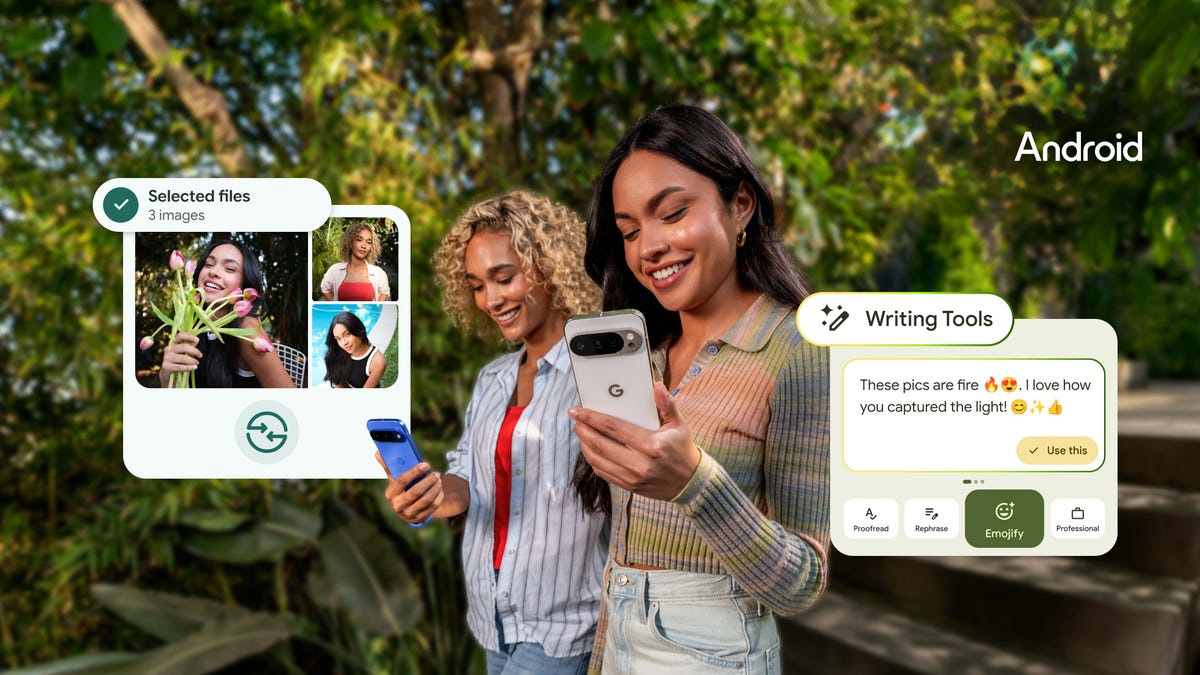Google Refreshes Android with Redesigned Quick Share and Group Audio Feature

Key Points
- Quick Share gets a clear send/receive toggle and live progress indicators.
- Audio Sharing uses LE Audio and QR codes for synchronized group listening.
- Gboard adds AI tools for tone adjustment, proofreading and meme generation.
- Androidify returns with generative AI to create personalized avatars and animations.
- Pixel Drop brings Material 3 theming, Adaptive Audio for Buds Pro 2, and auto‑launch of Maps on Wear OS.
Google is rolling out a new set of updates for Android and Pixel devices that simplify file sharing and introduce a group‑listening capability. Quick Share receives a cleaner interface with a clear send/receive toggle and live progress indicators. A new Audio Sharing feature uses LE Audio and QR codes to let multiple listeners connect to a single phone and enjoy synchronized sound on their own headphones. The update also adds AI writing tools to Gboard, revives Androidify with generative AI, and brings theming and audio enhancements to Pixel hardware.
Redesigned Quick Share Simplifies Transfers
Quick Share, Android’s built‑in way to send files, photos and links between nearby devices, gets a visual overhaul. The new layout separates sending and receiving into distinct modes, highlighted by a prominent toggle that eliminates the need to navigate through multiple menus. When a transfer starts, live progress indicators display real‑time status, reducing uncertainty about whether a file has been sent successfully. The changes aim to cut down to fewer failed sends and clearer feedback in crowded environments.
Audio Sharing Turns One Phone into a Mini Transmitter
The update introduces Audio Sharing, a feature that leverages LE Audio and QR codes to enable group listening. Two (or more) compatible Bluetooth headphones can pair with a single phone, allowing friends to listen to a playlist, podcast or movie together without splitters or earbud swapping. Users can generate a QR code for a private broadcast, letting nearby friends join the stream on their own headphones. Google notes that LE Audio support is expanding to Sony headphones and that Auracast compatibility is arriving on select Pixel phones, adding to existing support on Samsung Galaxy and Xiaomi devices.
AI‑Powered Enhancements Across Google Apps
Gboard now includes AI writing tools that let users polish typed text. The tools can adjust tone, proofread, fix errors and suggest captions, while meme generation and caption suggestions are built in to streamline social posting. The Emoji Keyboard adds a browse view for faster sticker hunting, along with new remix combinations.
Androidify, the previously discontinued avatar creator, returns with generative AI capabilities. Users can upload a selfie or type‑in a prompt, and Google’s models—including Gemini 2.5 Flash, Imagen and Veo 3—generate a personalized Android figure that can be captioned, animated or otherwise customized.
Pixel Device Updates Focus on Personalization and Audio
The latest Pixel Drop emphasizes personalization, audio intelligence and glanceable navigation. Material 3 Expressive theming lands on the Pixel 6 and newer phones as well as the Pixel Tablet. Pixel Buds Pro 2 receive Adaptive Audio and Loud Noise Protection. Additionally, Google Maps now auto‑launches on Pixel Watch and other Wear OS devices when walking or biking navigation is started on a phone, offering a more seamless transition between devices.
Overall, the bundle of updates aims to make everyday interactions—sharing files, listening together, writing messages, and customizing devices—more intuitive and integrated across the Android ecosystem.